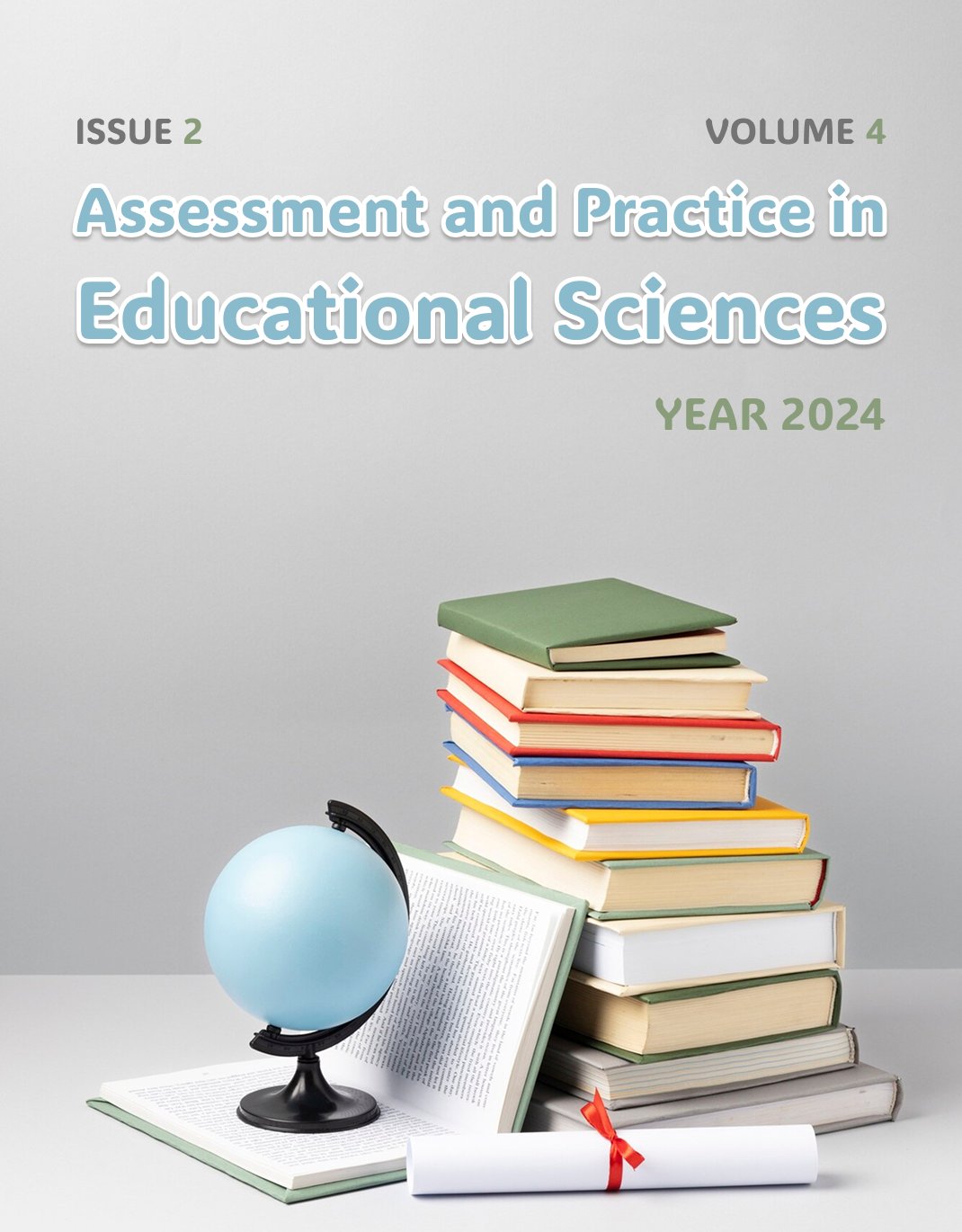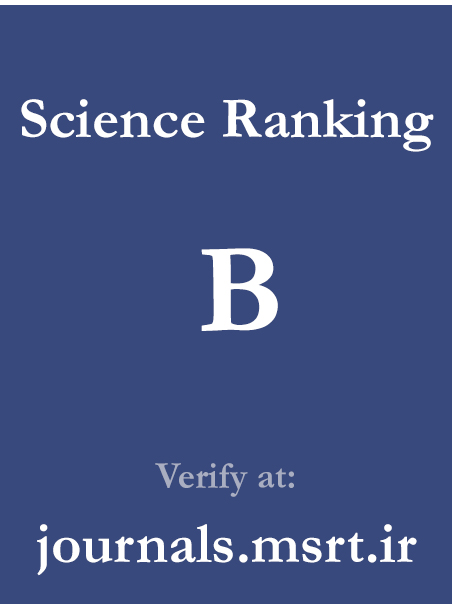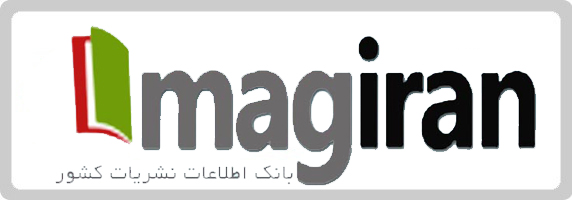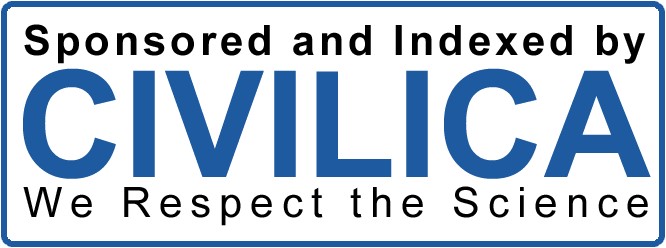Students’ Aesthetic Experiences in Performing Realistic Activities of Geometric Transformations
Keywords:
Aesthetic experience, Geometric transformations, Realistic activities, Belief, Logical thinkingAbstract
Diverse learners require education with a planned aesthetic to experience beautiful phenomena in mathematics. To do so, we designed an educational program based on aesthetic experiences for high school seniors in the eleventh grade for four months. We used Charmaz’s constructivist grounded theory and a qualitative approach. We collected data through observation, recorded dialogues, and semi-structured interviews. We explain students’ beliefs about the beauty of geometric transformations and the stages of logical thought required to perform associated activities. The findings indicate that the course based on the aesthetic experience of geometric transformations assists students in thinking about its nature aesthetically. The results also reveal aesthetic components as a medium for students to discuss mathematical ideas and develop logical thinking skills. We present the research outcome as a visual model to illustrate the relationship between geometric transformations, aesthetic experiences, logical thinking, and aesthetic beliefs.
Downloads
References
1. Diana D, Turmudi, Yohannes, editors. Analysis of teachers' difficulties in implementing STEM approach in learning: a study literature2021.
2. Parrish PE. Aesthetic principles for instructional design. Educational Technology Research and Development. 2009;57(4):511-28. doi: 10.1007/s11423-007-9060-7.
3. Sinclair N. Aesthetics as a liberating force in mathematics education? ZDM-The International Journal on Mathematics Education. 2009;41(1):45-60. doi: 10.1007/s11858-008-0132-x.
4. Chen RJ. Prospective elementary teachers' aesthetic experience and relationships to mathematics. Journal of Mathematics Teacher Education. 2017;20(3):207-30. doi: 10.1007/s10857-015-9329-4.
5. Uhrmacher PB. Toward a Theory of Aesthetic Learning Experiences. Curriculum Inquiry. 2015;39(5):613-36. doi: 10.1111/j.1467-873X.2009.00462.x.
6. Richman AS, Dietiker L, Riling M. The plot thickens: The aesthetic dimensions of a captivating mathematics lesson. The Journal of Mathematical Behavior. 2019;54:100671. doi: 10.1016/j.jmathb.2018.08.005.
7. Gadanidis G, Borba M, Hughes J, Lacerda H. Designing aesthetic experiences for young mathematicians: A model for mathematics education reform. International Journal of Research in Mathematics Education. 2016;6(2):225-44.
8. Huser J. STEAM and the Role of the Arts in STEM. 2020.
9. Rieger A. The Beautiful Art of Mathematics. Philosophia Mathematica. 2017;26(2):234-48. doi: 10.1093/philmat/nkx006.
10. Saxe AB, Wilson JL. Curriculum, aesthetics, and social justice: From the common to the exceptional. Current Issues in Education. 2021;22(2):1-20.
11. Fife JH, James K, Bauer M. A Learning Progression for Geometric Transformations. ETS Research Report Series. 2019;2019(1):1-16. doi: 10.1002/ets2.12236.
12. Papageorgiou E, Xenofontos C. Discovering geometrical transformations in the ancient mosaics of Cyprus: An instructional approach to Grade 6. Australian Mathematics Teacher. 2018;74(2):34-40.
13. Koichu B, Katz E, Berman A. Stimulating student aesthetic response to mathematical problems by means of manipulating the extent of surprise. The Journal of Mathematical Behavior. 2017;46:42-57. doi: 10.1016/j.jmathb.2017.02.005.
14. Tjoe H. Aesthetics in School Mathematics: A Potential Model and A Possible Lesson. The Mathematics Enthusiast. 2016;13(3):279-302. doi: 10.54870/1551-3440.1378.
15. Mahdavi A, Darabi F, Ahmadinia H. Investigating the relationship between spiritual intelligence and aesthetic intelligence with suicidal thoughts among students of Asadabad Medical Sciences Faculty: A descriptive study. Scientific Journal of Rafsanjan University of Medical Sciences. 2023;22(6):581-96. doi: 10.61186/jrums.22.6.581.
16. Wanzer DL, Finley KP, Zarian S, Cortez N. Experiencing flow while viewing art: Development of the Aesthetic Experience Questionnaire. Psychology of Aesthetics, Creativity, and the Arts. 2020;14(1):113-24. doi: 10.1037/aca0000203.
17. Huang Shih Y. Teaching Principle for Aesthetic Education: Cultivating Taiwanese Children's Aesthetic Literacy. International Journal of Education and Practice. 2020;8(3):568-76. doi: 10.18488/journal.61.2020.83.568.576.
18. Yang CP. Hepburn's natural aesthetic and its implications for aesthetic education. International Education Studies. 2013;6(7):225-31. doi: 10.5539/ies.v6n7p225.
19. Moroye CM, Uhrmacher PB. Teaching in the moment: Educational experience in the age of tomorrow. On the Horizon. 2018;26(2):170-80. doi: 10.1108/OTH-02-2018-0009.
20. Stemhagen K, Henney C. Democracy and Mathematics Education (Rethinking School Math for Our Troubled Times): Routledge; 2021.
21. Parlak Sert H, Başkale H. Students' increased time spent on social media, and their level of coronavirus anxiety during the pandemic, predict increased social media addiction. Health Information & Libraries Journal. 2023;40(3):262-74.
22. Montano U. Explaining Beauty in Mathematics: An Aesthetic Theory of Mathematics: Springer; 2014.
23. Portales C. Objective Beauty and Subjective Dissent in Leibniz's Aesthetics. Estetika: The Central European Journal of Aesthetics. 2018;55(1):67-88. doi: 10.33134/eeja.171.
24. Von Plato J. Elements of Logical Reasoning: Cambridge University Press; 2013.
25. Piirto J, Baska B. Serving Artistically Gifted Children and Youth Handbook for Counselors Serving Students With Gifts and Talents: Routledge; 2021. 231-46 p.
26. Starikova I. Aesthetic Preferences in Mathematics: A Case Study. Philosophia Mathematica. 2018;26(2):161-83. doi: 10.1093/philmat/nkx014.
27. Guven B. Using dynamic geometry software to improve eight grade students' understanding of transformation geometry. Australasian Journal of Educational Technology. 2012;28(2):364-82. doi: 10.14742/ajet.878.
28. Ahmad M, Siregar YP, Siregar NA. The Effectiveness of Realistic Mathematics Learning Model Based on Mandailing Culture in Teaching of Students' Mathematical Problem Solving Ability. Advances in Social Science, Education and Humanities Research. 2018;285:1-. doi: 10.2991/icm2e-18.2018.31.
29. Haji Babaie HR. National Curriculum Document of the Islamic Republic of Iran. 2013.
30. Ankyiah F. When the Artist Studio Is Alive, Art Is Alive: Empowering Art Educators and Students Through Live Studio Practice. Asian Research Journal of Arts & Social Sciences. 2023;21(1):1-11. doi: 10.9734/arjass/2023/v21i1457.
31. Zhou Y. Artistic Sports Activities Effectiveness for Enhancing Students’ Academic Performance Among Left-Behind Children: Mediating Effects of Loneliness. Frontiers in Psychology. 2024;15. doi: 10.3389/fpsyg.2024.1366501.
32. Nurjamaludin M, Gunawan D, Adireja RK, Alani N, editors. Realistic Mathematics Education (RME) approach to increase student's problem solving skill in elementary school2020.
33. Hirza B, Kusumah YS, Darhim, Zulkardi. Improving Intuition Skills Realistic Mathematics Education. Journal on Mathematics Education. 2014;5(1):27-34. doi: 10.22342/jme.5.1.1446.27-34.
34. Sevinc S, Lesh R. Training mathematics teachers for realistic math problems: A case of modeling-based teacher education courses. ZDM - Mathematics Education. 2018;50(1):301-14. doi: 10.1007/s11858-017-0898-9.
35. Zazkis R, Sinclair N, Liljedahl P. Lesson play in mathematics education: A tool for research and professional development: Springer; 2013.
36. Eberle RS. The role of children's mathematical aesthetics: The case of tessellations. The Journal of Mathematical Behavior. 2014;35:129-43. doi: 10.1016/j.jmathb.2014.07.004.
37. Pitt D. Conscious Belief. Rivista Internazionale di Filosofia e Psicologia. 2016;7(1):121-6.
38. Potrč M. Dispositional beliefs. Interdisciplinary Description of Complex Systems. 2015;13(4):548-57. doi: 10.7906/indecs.13.4.7.
39. Hobbs L. Examining the aesthetic dimensions of teaching: Relationships between teacher knowledge, identity and passion. Teaching and Teacher Education. 2012;28(5):718-27. doi: 10.1016/j.tate.2012.01.010.
40. Larcombe PJ. A Few Thoughts on the Aesthetics of Mathematics in Research and Teaching. Palestine Journal of Mathematics. 2018;7(1):1-8.
41. Dewey J. Some Stages of Logical Thought. The Philosophical Review. 1900;9(5):465-89. doi: 10.2307/2176692.
42. Charles RL, Hall B, Kennedy D, Bass LE, Johnson R, Murphy SJ, et al. Geometry Common Core Textbook: Pearson Education; 2015.
43. Denac O. The Significance and Role of Aesthetic Education in Schooling. Creative Education. 2014;5(19):1714-9. doi: 10.4236/ce.2014.519190.
44. Hafezi A, Abedipour MS, Khosravi H, Fattahpour A, Sharifi S, editors. Cultural and Artistic Education of Students. Fifth International Conference on Educational Sciences, Psychology, Counseling, and Education; 2025.
45. Mansouri SA. From Aesthetic to Aesthetics. Journal of Art and Civilization of the Orient. 2018;5(18):3-6.
46. Grütter JK. Asthetik der Architektur Grundlagen der Architektur-Wahrnehmung: W. Kohlhammer; 1987.
47. Karp AP. Which problems do teachers consider beautiful? A comparative study. For the Learning of Mathematics. 2008;28(1):36-43.
48. Brinkmann A. Mathematical Beauty and its Characteristics- A Study on the Students' Points of View. The Mathematics Enthusiast. 2009;6(3):365-80. doi: 10.54870/1551-3440.1158.
49. Braun V, Clarke V. Using thematic analysis in psychology. Qualitative Research in Psychology. 2006;3(2):77-101. doi: 10.1191/1478088706qp063oa.
50. Braun V, Clarke V. Thematic analysis. In: Cooper H, editor. APA handbook of research methods in psychology: Research designs: Quantitative, qualitative, neuropsychological, and biological2012. p. 57-71.
51. Silverman D. Doing Qualitative Research: A Practical Handbook: Sage; 2013.
52. Miles MB, Huberman AM. Qualitative Data Analysis: An Expanded Sourcebook: Sage; 1994.
53. Lincoln YS, Guba EG. Naturalistic Inquiry: Sage; 1985.
54. Hofstadter DR. Gödel, Escher, Bach: An Eternal Golden Braid: Basic Books Inc.; 1979.
55. Larson R, Boswell L, Stiff L. Geometry - Teacher's Edition: McDougal Littell, Houghton Mifflin Company; 2004.
Downloads
Published
Submitted
Revised
Accepted
Issue
Section
License
Copyright (c) 2024 Maryam Shahmohammadi (Author); Elahe Aminifar

This work is licensed under a Creative Commons Attribution-NonCommercial 4.0 International License.




